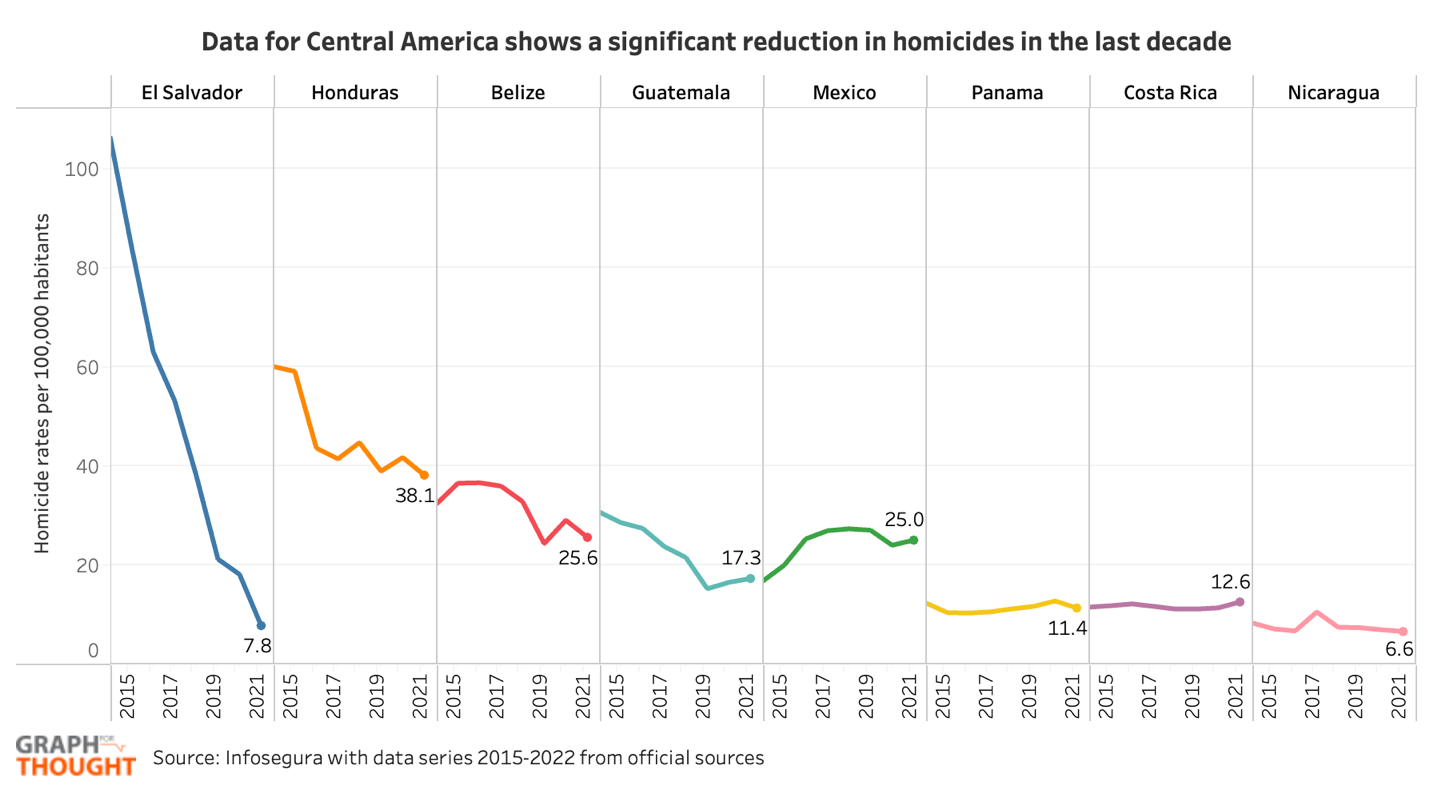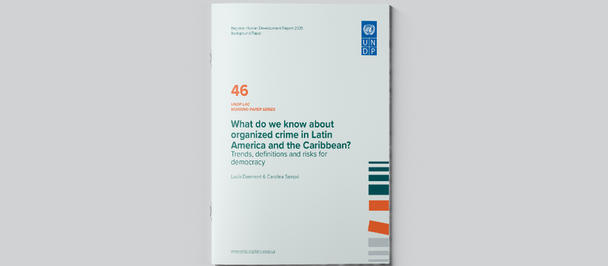An Epidemic on the Move: The Shifting Landscape of Citizen Security in Latin America and the Caribbean
August 31, 2023
The lack of citizen security in Latin America and the Caribbean has long been considered an important factor hindering development in the region. Recent data show that although homicides have decreased in many countries in recent years, LAC remains the most violent region in the world, with crime consistently above epidemic[1] levels. A previous #GraphForThought from 2019 highlighted the existing theories that help to explain the phenomenon of crime in the region. A culture of impunity, weak justice systems, lack of trust in police forces, persistent inequalities and lack of socioeconomic opportunities are but some of the factors that encourage criminal activities.
Using data from Infosegura, UNODC and InsightCrime this #GraphForThought offers a glimpse at a shifting landscape of insecurity - expressed in intentional homicide rates- in the region. As seen in the figure below, the region has maintained its homicide rates at epidemic levels with an average increase of 3.7% a year throughout the last decade. While Central America used to be the sub-region with the highest rates of homicides, we have seen that in the past few years, this profile has shifted. South America and the Caribbean experienced a significant spike in criminal activities in 2022. Structurally weak social protection, gang fragmentation, increased and diversification of production of cocaine, fentanyl and other drugs, the effects of COVID-19 as well as the circulation of weapons in the region seem to be some of the driving factors contributing to the spread of violence even in countries previously considered safe.

Political violence is of particular concern in the region, with election-linked violent events happening in several countries in the region. According to ACLED, events involving political violence increase significantly in countries across the region in the since 2018. Gender based violence is also of special concern. Among the 25 countries with the highest rate of femicides in the world, 14 are in Latin America and the Caribbean.
Preliminary findings from a study by UNDP INFOSEGURA in partnership with USAID find there has been a steady growth on the total expenditure on public security, justice and human rights in Guatemala, El Salvador and Honduras between 2010 and 2022, with an annual average of 8.2%for the three countries. Guatemala experienced a public spending growth of 10.5%, El Salvador of 6.9%, and Honduras of 6.1%. The largest portion of these resources was allocated to public security projects at 52.6% of the total budget while justice services received 44.3%, and 3.1% allocated to prevention, protection, human rights and social rehabilitation.
There are no silver bullets when it comes to addressing citizen insecurity in Latin America and the Caribbean. The citizen security landscape is different in each country, and thus addressing it requires strong institutions, context specific policies based on rigorous data, and a human-rights based multisectoral perspective. However, some of the underlying drivers seem to be similar: persistent inequality, weak institutions, poverty, and limited economic opportunities. Addressing these root causes, through informed policies and programmes underpinned by effective governance, is crucial to ensure citizen security. Equally important is the need to strengthen information and data systems to better diagnose, monitor and evaluate the effects and costs of crime in the region.
Ultimately, citizen security requires people-centered integrated approaches that include the transformation of social and cultural norms and that strengthen solutions at the local and community levels for peaceful coexistence and resilience.
[1] WHO classifies a homicide rate above 10 per 100,000 inhabitants as an “epidemic”.


 Locations
Locations



